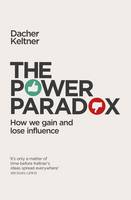Handbook of Environmental Psychology
 -15%
portes grátis
-15%
portes grátis
Handbook of Environmental Psychology
Bechtel, Robert B.; Churchman, Arza
John Wiley & Sons Inc
06/2002
736
Mole
Inglês
9780471405948
15 a 20 dias
1746
Descrição não disponível.
SECTION I: SHARPENING THEORIES.
The Increasing Contexts in the Study of Environment BehaviorRelations (S. Wapner & J. Demick).
The Ethical Imperative (L. Rivlin).
Environmental Psychology: From Spatial-Physical Environment toSustainable Development (M. Bonnes & M. Bonaiuto).
Environmental Management: A Perspective from EnvironmentalPsychology (E. Pol).
The New Environmental Psychology: The Human InterdependenceParadigm (T. Garling, et al.).
The Phenomenological Approach to People-Environment Studies (C.Graumann).
Ecological Psychology: Historical Contexts, Current Conception,Prospective Directions (A. Wicker).
SECTION II: SHARPENING LINKS TO OTHER DISCIPLINES.
Exploring Pathology: Relationships between Clinical andEnvironmental Psychology (K. Anthony & N. Watkins).
Environmental Anthropology (E. Liebow).
Environmental Sociology (R. Dunlap).
Environmental Psychophysiology (R. Parsons & L.Tassinary).
Environmental Psychology and Urban Planning: Where Can the TwainMeet? (A. Churchman).
SECTION III: SHARPENING METHODS.
Transactionally Oriented Research: Examples and Strategies (C.Werner, et al.).
Meta-Analysis (A. Stamps).
The Experience Sampling Method: Measuring the Context and Contentof Lives (J. Hektner & M. Csikszentmihalyi).
The Open Door of GIS (R. Golledge).
Structural Equation Modeling (V. Corral-Verdugo).
Spatial Structure of Environment and Behavior (J. Peponis & J.Wineman).
Behavioral-Based Architectural Programming (R. Hershberger).
Postoccupancy Evaluation: Issues and Implementation (C.Zimring).
SECTION IV: SHARPENING APPLICATION.
Making a Difference: Some Ways Environmental Psychology HasImproved the World (R. Gifford).
Bridging the Gap: How Scientists Can Make a Difference (F.Kuo).
Women and Environment (K. Franck).
Children's Environment (K. Korpela).
Design and Dementia (K. Day & M. Calkins).
Healthy Residential Environments (R. Lawrence).
Crime Prevention through Environmental Design (CPTED): Yes, No,Maybe, Unknowable, and All of the Above (R. Taylor).
Wayfinding: A Broad View (J. Carpman & M. Grant).
Work Environments (J. McCoy).
Environmental Psychology in Museums, Zoos, and Other ExhibitionCenters (S. Bitgood).
Climate, Weather, and Crime (J. Rotton & E. Cohn).
Noise Pollution: A Hazard to Physical and Mental Well-Being (A.Bronzaft).
The History and Future of Disaster Research (L. Peek & D.Mileti).
The Challenge of Increasing Proenvironment Behavior (E.Geller).
Emerging Theoretical and Methodological Perspectives onConservation Behavior (J. Vining & A. Ebreo).
Contamination: The Invisible Built Environment (M.Edelstein).
Environmental Conflict and Its Resolution (T. d'Estree, etal.).
A Methodology of Participatory Planning (L. Horelli).
Sustained Participation: A Community Based Approach to AddressingEnvironmental Problems (E. Wiesenfeld & E. Sanchez).
SECTION V: THE FUTURE.
Personal Space in a Digital Age (R. Sommer).
Toward an Environmental Psychology of the Internet (D. Stokols& M. Montero).
On to Mars! (R. Bechtel).
Author Index.
Subject Index.
The Increasing Contexts in the Study of Environment BehaviorRelations (S. Wapner & J. Demick).
The Ethical Imperative (L. Rivlin).
Environmental Psychology: From Spatial-Physical Environment toSustainable Development (M. Bonnes & M. Bonaiuto).
Environmental Management: A Perspective from EnvironmentalPsychology (E. Pol).
The New Environmental Psychology: The Human InterdependenceParadigm (T. Garling, et al.).
The Phenomenological Approach to People-Environment Studies (C.Graumann).
Ecological Psychology: Historical Contexts, Current Conception,Prospective Directions (A. Wicker).
SECTION II: SHARPENING LINKS TO OTHER DISCIPLINES.
Exploring Pathology: Relationships between Clinical andEnvironmental Psychology (K. Anthony & N. Watkins).
Environmental Anthropology (E. Liebow).
Environmental Sociology (R. Dunlap).
Environmental Psychophysiology (R. Parsons & L.Tassinary).
Environmental Psychology and Urban Planning: Where Can the TwainMeet? (A. Churchman).
SECTION III: SHARPENING METHODS.
Transactionally Oriented Research: Examples and Strategies (C.Werner, et al.).
Meta-Analysis (A. Stamps).
The Experience Sampling Method: Measuring the Context and Contentof Lives (J. Hektner & M. Csikszentmihalyi).
The Open Door of GIS (R. Golledge).
Structural Equation Modeling (V. Corral-Verdugo).
Spatial Structure of Environment and Behavior (J. Peponis & J.Wineman).
Behavioral-Based Architectural Programming (R. Hershberger).
Postoccupancy Evaluation: Issues and Implementation (C.Zimring).
SECTION IV: SHARPENING APPLICATION.
Making a Difference: Some Ways Environmental Psychology HasImproved the World (R. Gifford).
Bridging the Gap: How Scientists Can Make a Difference (F.Kuo).
Women and Environment (K. Franck).
Children's Environment (K. Korpela).
Design and Dementia (K. Day & M. Calkins).
Healthy Residential Environments (R. Lawrence).
Crime Prevention through Environmental Design (CPTED): Yes, No,Maybe, Unknowable, and All of the Above (R. Taylor).
Wayfinding: A Broad View (J. Carpman & M. Grant).
Work Environments (J. McCoy).
Environmental Psychology in Museums, Zoos, and Other ExhibitionCenters (S. Bitgood).
Climate, Weather, and Crime (J. Rotton & E. Cohn).
Noise Pollution: A Hazard to Physical and Mental Well-Being (A.Bronzaft).
The History and Future of Disaster Research (L. Peek & D.Mileti).
The Challenge of Increasing Proenvironment Behavior (E.Geller).
Emerging Theoretical and Methodological Perspectives onConservation Behavior (J. Vining & A. Ebreo).
Contamination: The Invisible Built Environment (M.Edelstein).
Environmental Conflict and Its Resolution (T. d'Estree, etal.).
A Methodology of Participatory Planning (L. Horelli).
Sustained Participation: A Community Based Approach to AddressingEnvironmental Problems (E. Wiesenfeld & E. Sanchez).
SECTION V: THE FUTURE.
Personal Space in a Digital Age (R. Sommer).
Toward an Environmental Psychology of the Internet (D. Stokols& M. Montero).
On to Mars! (R. Bechtel).
Author Index.
Subject Index.
Este título pertence ao(s) assunto(s) indicados(s). Para ver outros títulos clique no assunto desejado.
international; latest; explores; team; scholars; leading; straight; worlds; critical; concepts; field; environmental; research; psychology; applications; growing; handbook; rapidly; comprehensive overview
SECTION I: SHARPENING THEORIES.
The Increasing Contexts in the Study of Environment BehaviorRelations (S. Wapner & J. Demick).
The Ethical Imperative (L. Rivlin).
Environmental Psychology: From Spatial-Physical Environment toSustainable Development (M. Bonnes & M. Bonaiuto).
Environmental Management: A Perspective from EnvironmentalPsychology (E. Pol).
The New Environmental Psychology: The Human InterdependenceParadigm (T. Garling, et al.).
The Phenomenological Approach to People-Environment Studies (C.Graumann).
Ecological Psychology: Historical Contexts, Current Conception,Prospective Directions (A. Wicker).
SECTION II: SHARPENING LINKS TO OTHER DISCIPLINES.
Exploring Pathology: Relationships between Clinical andEnvironmental Psychology (K. Anthony & N. Watkins).
Environmental Anthropology (E. Liebow).
Environmental Sociology (R. Dunlap).
Environmental Psychophysiology (R. Parsons & L.Tassinary).
Environmental Psychology and Urban Planning: Where Can the TwainMeet? (A. Churchman).
SECTION III: SHARPENING METHODS.
Transactionally Oriented Research: Examples and Strategies (C.Werner, et al.).
Meta-Analysis (A. Stamps).
The Experience Sampling Method: Measuring the Context and Contentof Lives (J. Hektner & M. Csikszentmihalyi).
The Open Door of GIS (R. Golledge).
Structural Equation Modeling (V. Corral-Verdugo).
Spatial Structure of Environment and Behavior (J. Peponis & J.Wineman).
Behavioral-Based Architectural Programming (R. Hershberger).
Postoccupancy Evaluation: Issues and Implementation (C.Zimring).
SECTION IV: SHARPENING APPLICATION.
Making a Difference: Some Ways Environmental Psychology HasImproved the World (R. Gifford).
Bridging the Gap: How Scientists Can Make a Difference (F.Kuo).
Women and Environment (K. Franck).
Children's Environment (K. Korpela).
Design and Dementia (K. Day & M. Calkins).
Healthy Residential Environments (R. Lawrence).
Crime Prevention through Environmental Design (CPTED): Yes, No,Maybe, Unknowable, and All of the Above (R. Taylor).
Wayfinding: A Broad View (J. Carpman & M. Grant).
Work Environments (J. McCoy).
Environmental Psychology in Museums, Zoos, and Other ExhibitionCenters (S. Bitgood).
Climate, Weather, and Crime (J. Rotton & E. Cohn).
Noise Pollution: A Hazard to Physical and Mental Well-Being (A.Bronzaft).
The History and Future of Disaster Research (L. Peek & D.Mileti).
The Challenge of Increasing Proenvironment Behavior (E.Geller).
Emerging Theoretical and Methodological Perspectives onConservation Behavior (J. Vining & A. Ebreo).
Contamination: The Invisible Built Environment (M.Edelstein).
Environmental Conflict and Its Resolution (T. d'Estree, etal.).
A Methodology of Participatory Planning (L. Horelli).
Sustained Participation: A Community Based Approach to AddressingEnvironmental Problems (E. Wiesenfeld & E. Sanchez).
SECTION V: THE FUTURE.
Personal Space in a Digital Age (R. Sommer).
Toward an Environmental Psychology of the Internet (D. Stokols& M. Montero).
On to Mars! (R. Bechtel).
Author Index.
Subject Index.
The Increasing Contexts in the Study of Environment BehaviorRelations (S. Wapner & J. Demick).
The Ethical Imperative (L. Rivlin).
Environmental Psychology: From Spatial-Physical Environment toSustainable Development (M. Bonnes & M. Bonaiuto).
Environmental Management: A Perspective from EnvironmentalPsychology (E. Pol).
The New Environmental Psychology: The Human InterdependenceParadigm (T. Garling, et al.).
The Phenomenological Approach to People-Environment Studies (C.Graumann).
Ecological Psychology: Historical Contexts, Current Conception,Prospective Directions (A. Wicker).
SECTION II: SHARPENING LINKS TO OTHER DISCIPLINES.
Exploring Pathology: Relationships between Clinical andEnvironmental Psychology (K. Anthony & N. Watkins).
Environmental Anthropology (E. Liebow).
Environmental Sociology (R. Dunlap).
Environmental Psychophysiology (R. Parsons & L.Tassinary).
Environmental Psychology and Urban Planning: Where Can the TwainMeet? (A. Churchman).
SECTION III: SHARPENING METHODS.
Transactionally Oriented Research: Examples and Strategies (C.Werner, et al.).
Meta-Analysis (A. Stamps).
The Experience Sampling Method: Measuring the Context and Contentof Lives (J. Hektner & M. Csikszentmihalyi).
The Open Door of GIS (R. Golledge).
Structural Equation Modeling (V. Corral-Verdugo).
Spatial Structure of Environment and Behavior (J. Peponis & J.Wineman).
Behavioral-Based Architectural Programming (R. Hershberger).
Postoccupancy Evaluation: Issues and Implementation (C.Zimring).
SECTION IV: SHARPENING APPLICATION.
Making a Difference: Some Ways Environmental Psychology HasImproved the World (R. Gifford).
Bridging the Gap: How Scientists Can Make a Difference (F.Kuo).
Women and Environment (K. Franck).
Children's Environment (K. Korpela).
Design and Dementia (K. Day & M. Calkins).
Healthy Residential Environments (R. Lawrence).
Crime Prevention through Environmental Design (CPTED): Yes, No,Maybe, Unknowable, and All of the Above (R. Taylor).
Wayfinding: A Broad View (J. Carpman & M. Grant).
Work Environments (J. McCoy).
Environmental Psychology in Museums, Zoos, and Other ExhibitionCenters (S. Bitgood).
Climate, Weather, and Crime (J. Rotton & E. Cohn).
Noise Pollution: A Hazard to Physical and Mental Well-Being (A.Bronzaft).
The History and Future of Disaster Research (L. Peek & D.Mileti).
The Challenge of Increasing Proenvironment Behavior (E.Geller).
Emerging Theoretical and Methodological Perspectives onConservation Behavior (J. Vining & A. Ebreo).
Contamination: The Invisible Built Environment (M.Edelstein).
Environmental Conflict and Its Resolution (T. d'Estree, etal.).
A Methodology of Participatory Planning (L. Horelli).
Sustained Participation: A Community Based Approach to AddressingEnvironmental Problems (E. Wiesenfeld & E. Sanchez).
SECTION V: THE FUTURE.
Personal Space in a Digital Age (R. Sommer).
Toward an Environmental Psychology of the Internet (D. Stokols& M. Montero).
On to Mars! (R. Bechtel).
Author Index.
Subject Index.
Este título pertence ao(s) assunto(s) indicados(s). Para ver outros títulos clique no assunto desejado.











